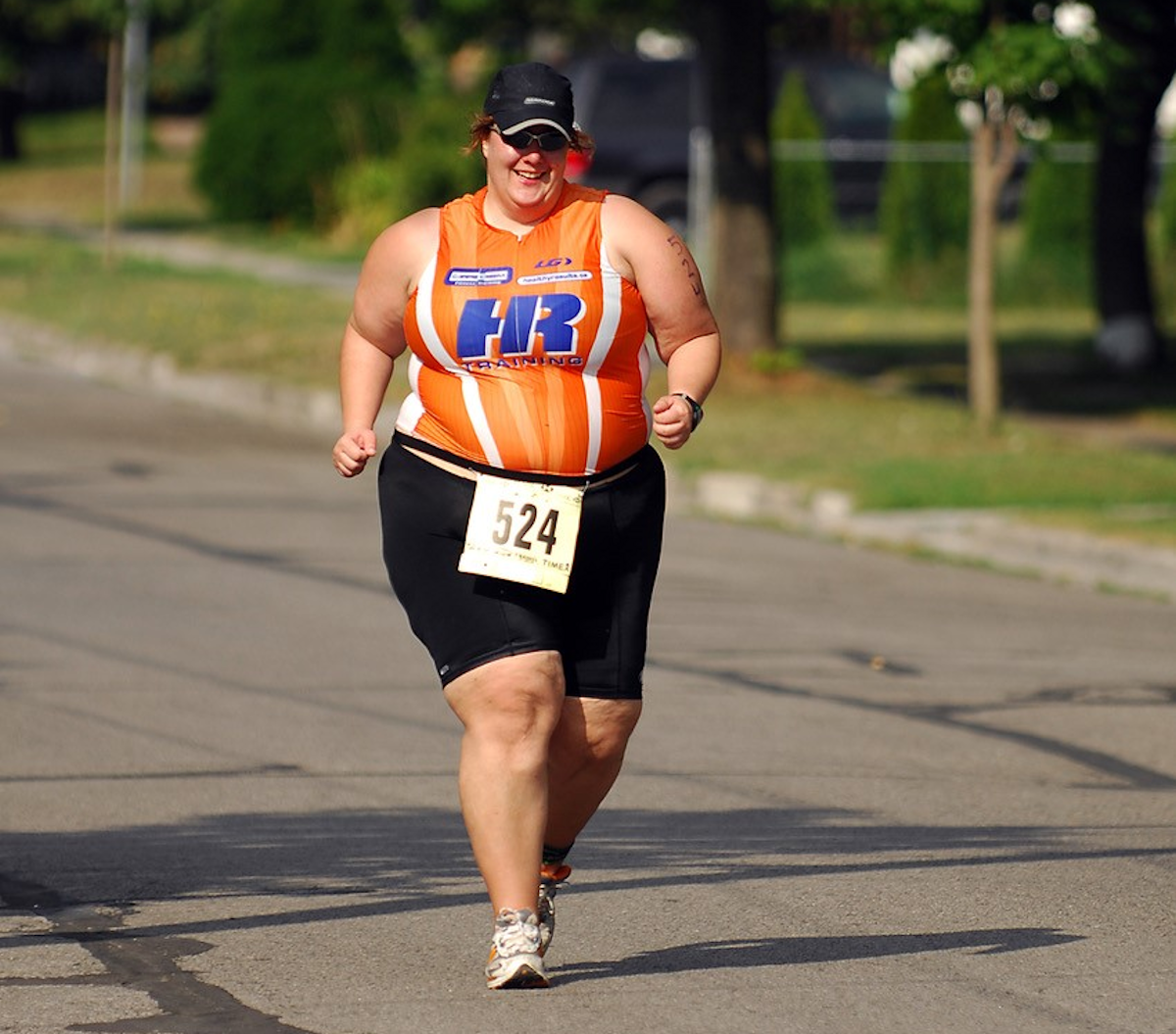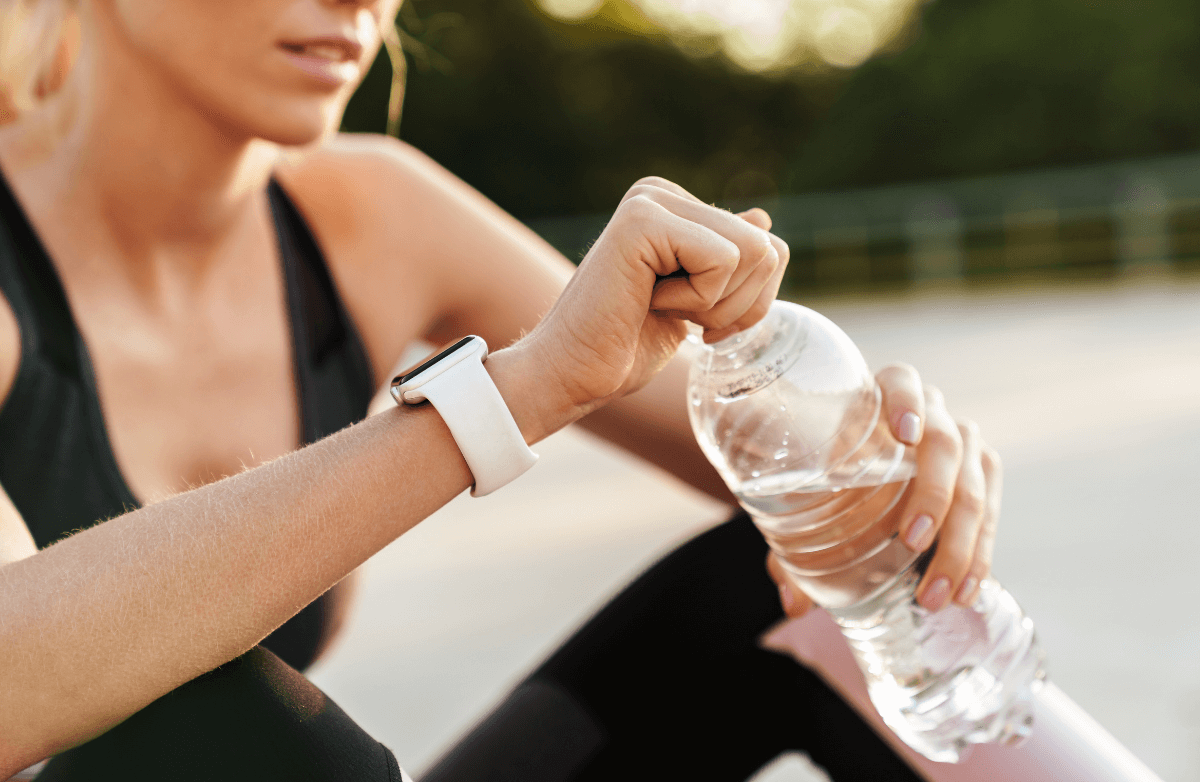With enough obstacles already standing in the way of starting a new exercise program, a fear of not being the "right" kind of person or type of body for a certain exercise is the last thing anyone should worry about.
Tap Into Your Inner Athlete
Krista Henderson is the creator of Born to Reign Athletics, a website dedicated to motivating, educating and celebrating plus-size athletes. "Body image is a common issue many plus-size people struggle with, both male and female," she explains. "Many of us have grown up in a society bombarded with media messages telling us that thin is beautiful and good, and being fat is bad and unworthy. As a result, many people are unwilling to put themselves out there and try new activities for fear of judgment from others." Henderson goes on to say that, "All bodies are good bodies, and your worth and capabilities are not measured by the numbers on the scale. Starting a new fitness activity is no different than taking a new class or starting a new job—you go in feeling a bit nervous, but you have a built-in community to support you."
Henderson believes that finding your community is key and will help you develop skills to abandon negative self-talk, while learning to include language that recognizes and celebrates every small fitness victory along the way. You can also draw upon other experiences in your life as the evidence that you have the power to accomplish anything you want. "Before you know it, you will have experienced a mindset shift, seeing yourself as a stronger and fit person or athlete whose self-confidence and self-esteem has risen; a desire to engage with others who share the same philosophies and goals; and your fears of haters and judgement fade into the background," she explains.

Photographer credit: Mike Cheliak
The motto of Henderson's website is "Tap Into Your Inner Athlete." She explains that everyone has an inner athlete, it’s just a matter of finding the right activity that resonates with you. "In the beginning of my athletic journey, I had a defensive attitude, wanting to prove to others and smash the stereotype that plus-size people are lazy," she says. "This strategy got me started, but it was short-lived and I don’t recommend it. Holding a defiant attitude takes energy.
Once you've decided to go for it, there are modifications and other considerations unique to those who are overweight and obese that you'll want to take into account before getting started. The good news is that most activities require simple changes to make the experience as positive and stress-free as possible.
Modify Popular Exercises With Ease
1. Indoor Rowing
Richard Wilcock, personal trainer and owner of Flagship Fitness, works with obese clients that do a variety of physical activities, including rowing. "One
2. CrossFit
Ethan Schmidt is a certified CrossFit trainer who says there are many
For the Olympic lifting aspects of CrossFit, Schmidt says that overweight people aren't as disadvantaged as they might think. "These lifts are new to almost everyone who starts," he says. "If they have problems with flexibility, I always have athletes lift power cleans and snatches (starting with a very low amount of weight) until they have the mobility to perform full squat movements."
3. Pilates
Janis Isaman, a certified Pilates instructor and owner of My Body Couture, says there are many simple modifications
- On all fours, extend one leg behind you and lift slowly, then progress to lifting one leg and the opposite arm at the same time. Do eight to 12 repetitions on each side.
- Standing, lift one leg (bending at the knee) and hold. Then, progress to slowly swinging that leg forward and back. If needed, use a chair for balance. Again, do eight to 12 repetitions on each side.
Elizabeth Lowry, a certified spinning instructor, recommends doing a few things before the class even begins. "Make sure you come to class at least 10 minutes early so that the instructor can set you up on your bike, walk you through the different hand and leg positions, show you how to work the resistance knob or handle, and to discuss your heart-rate goals or how to read a perceived exertion chart or bike monitor, if available," she explains.
"It’s better to sit when climbing hills if you are new to spin, as climbing a hill out of the saddle is harder on your joints and harder on your body in general if it’s not something you’re used to. If you want to try climbing in or out of the saddle, make sure your resistance is somewhere between what feels like a small or medium hill and remember you can always sit down or take resistance off when needed." Lowry's best piece of advice is this: "Listen to your body and adjust as necessary. That’s what’s great about spin: You control your workout."
5. Running
Tee Major, a FitFusion trainer and ACE-certified Group Fitness Instructor who recommends getting a pedometer and counting walking steps before progressing to a full run. "Make the time to walk an extra 2,000 steps per day, which would expend an additional 100 calories," he explains. "Divide this up into multiple short sessions of walking throughout the day. When you lose the weight and feel up to it, consider integrating interval runs of 20 seconds of running and 10 seconds of walking for four-minute rounds, slowly working your way up to full runs." Seek out programs that start with walking before integrating jogging and running intervals as a way to slowly train your body to acclimate to running and the demands it places on the body.
As with any activity, always consult with instructors and trainers to make sure













